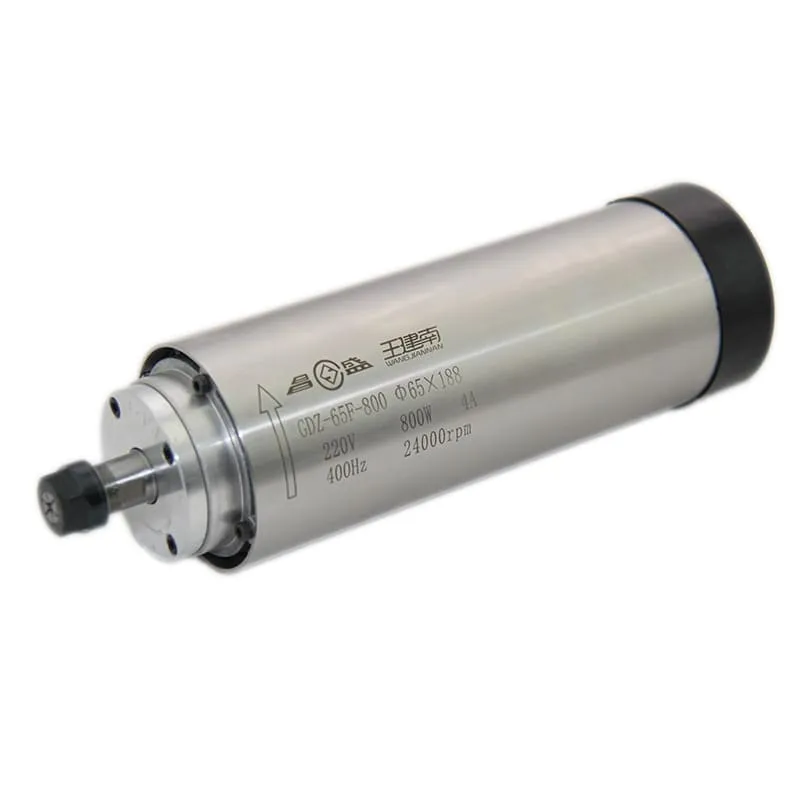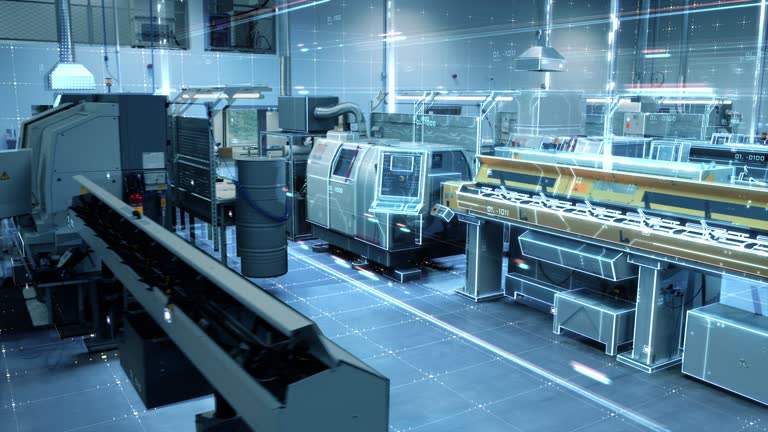How to Use CNC Software
If you are just beginning your journey in CNC machining or even if you are a seasoned CNC operator, understanding how to use CNC software can unlock a whole new level of efficiency and creativity in your projects. In this article, we will delve into the various types of CNC software available, their importance, and how to make the best use of them for your CNC machining needs. From designing parts to creating detailed tool paths, CNC software plays a vital role in every stage of production, and understanding it well can help you run a more successful and profitable CNC operation.
What is CNC Software?
CNC software, also known as Computer Numerical Control software, is a collection of programs used to control CNC machines like CNC routers, mills, and lathes. It plays a critical role in converting a design into machine-readable code, known as G-code, which CNC machines use to control the movements of their various parts.
CNC software is not just a single type of software but a combination of several categories, each with its specific functions. Typically, the major types of CNC software include CAD software for design, CAM software for tool path creation, and CNC control software to directly interface with the machine.
Importance of CNC Software in Machining
The correct use of CNC software can significantly impact productivity, quality, and profitability. With efficient CNC software, businesses can cut down on material waste, reduce cycle times, and achieve intricate design details that would otherwise be impossible with manual machining. The automation provided by CNC control software enhances precision, which makes CNC machining ideal for industries that require high-quality and repeatable production runs.
Whether you are involved in woodworking projects, metal fabrication, or plastics manufacturing, CNC software brings about a new level of creativity and efficiency. Let’s go further into each type of CNC software to understand how they are used in the overall workflow.
Types of CNC Software
To master CNC operations, it is vital to understand the various types of CNC software, each with a distinct role to play in the CNC machining process. Below are the main categories of CNC software that you should be familiar with.
1. CAD Software: Designing the Part
CAD (Computer-Aided Design) software is used to create the designs that will eventually be machined by your CNC. CAD software allows you to draw precise blueprints for your projects. Popular CAD programs include AutoCAD, SolidWorks, and Fusion 360.
With CAD software, you can draw lines, shapes, and other elements to create your 2D or 3D models. These drawings are then translated into instructions that will be used by CAM software to create tool paths. CAD software makes it easy to generate detailed blueprints for parts and assemblies.
Benefits of CAD Software in CNC Machining:
- Precision: CAD programs allow for detailed designs with exact measurements.
- Complexity: Design intricate parts that would be difficult to produce manually.
- Visualization: Provides a 3D view of the part, making it easier to visualize the finished product.
Internal Link:
For more information on compatible spindle motors for CNC machines, visit our CNC Spindle Motor page which also has various accessories that can improve your workflow.

An image of an 800W ER11 Air-Cooled Spindle that can be used for CNC applications.
2. CAM Software: Creating the Tool Paths
After designing your part in CAD, the next step is to create the tool paths that the CNC machine will follow using CAM (Computer-Aided Manufacturing) software. CAM software converts the CAD design into G-code, which is the language used by CNC machines.
CAM software is crucial because it determines the exact movements of the CNC machine, including feed rate, spindle speed, and depth of cut. It takes into account the material properties, tool geometry, and cutting conditions. Some popular CAM software includes Mastercam, Fusion 360, and Carbide Create.
Benefits of CAM Software:
- Accuracy: CAM software ensures that the tool paths are optimized for the most efficient cut.
- Efficiency: It can minimize tool wear and material waste by providing the best possible cutting path.
- Flexibility: CAM programs allow adjustments to be made for different machines and materials.
Internal Link:
Explore our 2.2KW ER16 Air-Cooled Spindle that is compatible with high-speed CNC machining, offering great performance for both wood and metal cutting tasks.

This spindle is ideal for CNC machining tasks that require precision and reliability.
3. CNC Control Software: Running the Machine
Once the tool paths have been generated, CNC control software is used to interface with the CNC machine and execute the G-code. This is where you actually control the machine’s movements, set the spindle speed, and manage other parameters.
Popular CNC control software includes Mach3, LinuxCNC, and GRBL. These programs allow for real-time monitoring and control of the machine, providing a detailed interface where operators can tweak parameters to achieve the best results.
Benefits of CNC Control Software:
- Precision Control: Allows for fine-tuning of spindle speed, depth of cut, and feed rates.
- Automation: Handles repetitive tasks, making the process less labor-intensive.
- Safety Features: Many CNC control programs include safety features that help prevent crashes and machine errors.
Internal Link:
Visit our CNC Router Spindles page for a wide range of options that are perfect for enhancing the efficiency and versatility of your CNC router.

Our ER20 spindles offer a high level of control, making them ideal for a range of CNC applications.
Setting Up CNC Software for Your Machine
The key to successful CNC machining lies in correctly setting up the software. Below are the steps to set up CNC software, ensuring a smooth and productive workflow.
Step 1: Install and Configure CAD Software
The first step involves installing a CAD program on your computer. After installation, set up the software by adjusting the workspace, units, and preferences. Make sure that your design can be saved in a format that is compatible with your CAM software.
Step 2: Generate Tool Paths with CAM Software
Once the part is designed, export it to your CAM software to generate tool paths. Set the cutting depth, tool diameter, and feed rate to optimize the cutting process. Some CAM software also provides a simulation feature that allows you to see how the machine will interact with the material.
Step 3: Load the G-Code into CNC Control Software
After generating the G-code from your CAM software, load it into the CNC control software. Check for any errors in the G-code, and then connect your computer to the CNC machine. The control software will allow you to start, pause, and stop the machining process as needed.
Step 4: Testing and Calibration
Before running a production part, it’s important to test the setup using a practice material. Calibrate the machine to ensure everything is working as expected. Testing can help avoid costly mistakes that may damage either the machine or the material.
Common CNC Software Programs for CNC Routers
If you’re using a CNC router, the software options might vary depending on your project requirements. Below, we’ll cover some of the commonly used software programs for CNC routers.
Carbide Create
Carbide Create is a great entry-level CAM software for those who are new to CNC routing. It comes with simple design features and is compatible with GRBL-based machines, making it a perfect match for hobbyists.
Fusion 360
Fusion 360 is an all-in-one solution that provides both CAD and CAM functionalities. It’s a favorite among both beginners and experts due to its flexibility and cloud-based collaboration features.
Mach3
Mach3 is a versatile control software that can be used with most CNC routers. It provides advanced features that allow full control over spindle speeds, feed rates, and tool paths.
VCarve Pro
For woodworkers, VCarve Pro is an excellent choice. It provides features like pocketing, profiling, and tool path generation, which are particularly useful for creating intricate wooden parts.
Benefits of Using the Right CNC Software
Choosing the right CNC software can make a significant difference in the outcome of your projects. Below are some of the benefits of using the right software for your CNC router or machine.
- Increased Precision: The right software allows you to design and manufacture parts with the highest degree of accuracy.
- Greater Efficiency: By optimizing tool paths and feed rates, the production process is faster and more efficient, reducing material waste.
- Enhanced Flexibility: With the right CNC software, you can work with a wide range of materials like wood, metal, and plastics, making it possible to expand your product offerings.
FAQs on Using CNC Software
1. What is the difference between CAD and CAM software?
CAD software is used for designing parts, while CAM software is used for generating tool paths and G-code for the CNC machine.
2. Can I use the same software for both CAD and CAM?
Yes, some programs like Fusion 360 offer both CAD and CAM functionalities, which can simplify the workflow.
3. What is G-code, and why is it important?
G-code is the language used to instruct CNC machines on how to move. It controls every aspect of the machine’s operation, including speed, direction, and cutting depth.
4. Is Carbide Create suitable for beginners?
Yes, Carbide Create is user-friendly and an excellent choice for those new to CNC machining, especially for simple 2D projects.
5. How do I choose the right spindle for my CNC router?
The right spindle depends on your material and the complexity of your project. You can explore various options on our CNC Router Spindles page to find the perfect fit for your needs.
Conclusion
Learning how to use CNC software effectively is key to a successful CNC machining experience. Whether you’re designing parts using CAD software, generating tool paths with CAM software, or running your CNC machine with control software, every step plays a crucial role in the final outcome. Understanding each type of software and how they interrelate helps streamline your workflow, leading to higher precision, reduced waste, and more efficient production.
If you’re looking to upgrade your CNC setup, don’t hesitate to explore our collection of high-performance spindles and accessories, all designed to make your CNC machining projects easier and more efficient. Visit Spindle Motor Shop today for more details and to find the perfect spindle for your machine.

